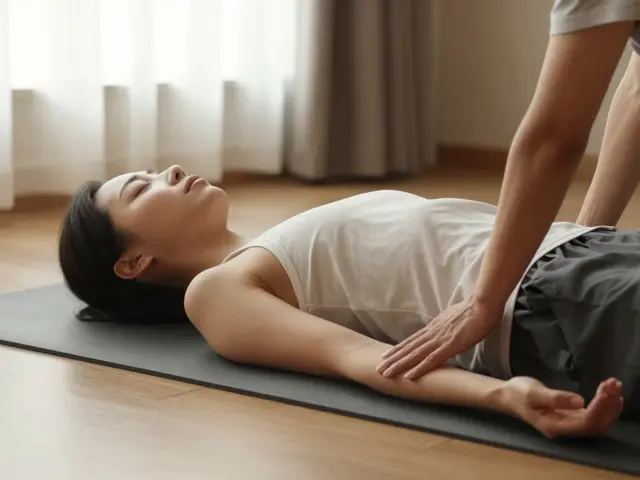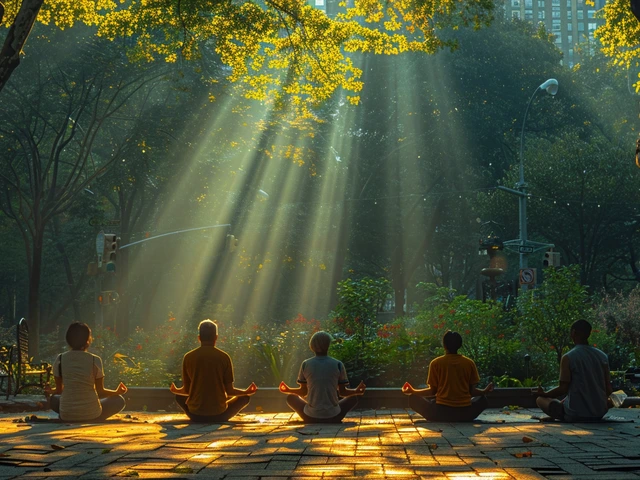Chinese Medicine Massage: Practical Tools to Feel Better
Most people think Chinese medicine is just acupuncture. It's not. Chinese medicine offers simple hands-on tools—acupressure, Tui Na, cupping, Gua Sha and moxibustion—that you can use with a therapist or at home to ease pain, reduce stress, and speed recovery.
Acupressure and acupuncture share the same points. Pressing key points can help with headaches, nausea, neck tension and low energy. Try Hegu (LI4) for a tension headache: press the web between thumb and index finger with medium firm pressure for 30–60 seconds. For nausea or motion sickness, press Neiguan (PC6) on the inner forearm three finger widths from the wrist. For neck tightness, use Fengchi (GB20) at the base of the skull with gentle kneading.
Tui Na is the Chinese version of therapeutic massage. It uses thumb rolls, pushes, and joint mobilizations to loosen tight muscles and improve circulation. A short Tui Na session focuses on the neck, shoulders, and back and usually feels deeper than a typical spa massage. Tell your therapist where it hurts and how much pressure you want. Expect sore but improving feelings for a day or two after a strong session.
Cupping and Gua Sha are great for stuck tension. Cupping creates suction to increase blood flow; Gua Sha uses a flat tool to scrape the skin and move stagnation. Both can leave red or purple marks that fade in a few days. If you bruise easily or take blood thinners, skip or check with a practitioner first. Avoid aggressive Gua Sha on the face or thin skin.
Moxibustion warms specific points to boost circulation and calm cramps. Practitioners usually hold a burning moxa stick above the point or use moxa cones near the skin. Never try burning moxa without guidance—it can burn the skin if misused. Herbal plasters and poultices are also part of Chinese medicine; follow ingredient lists and test a small patch before full use.
Quick self-care moves
You don't need a therapist to get relief. Press Hegu (LI4) for headaches, PC6 for nausea, and ST36 below the knee to support energy—hold each point for about 30–60 seconds with steady pressure. Use circular kneading on the base of the skull for neck tension. For a gentle Gua Sha at home, lightly oil the area and rub a smooth tool along the muscle for a few minutes—stop if you see heavy bruising or feel sharp pain.
What to expect from a session
A practitioner will ask about your health, feel your pulse, and look at your tongue—simple checks to choose treatment. Sessions often mix Tui Na, acupressure, cupping, and herbal advice. Post-treatment tips: rest, drink water, avoid alcohol and heavy workouts for 24 hours. If you have pregnancy, active cancer, skin problems, or are on blood thinners, tell your practitioner first.
Chinese medicine offers practical options that fit modern life. Try one move today, see how your body responds, and use a trained practitioner when you want stronger results.
Want guidance? Ask for a licensed TCM practitioner and read client reviews before booking today.

Knife Massage: A Bizarre Trend or an Effective Therapy?
Welcome to my unique exploration into the fascinating realm of Knife Massage, an innovative wellness trend! Here we delve into the origins of this alternative therapy rooted in ancient Chinese medicine – discussing its bizarre nature, potential health benefits, and its emerging presence in the wellness world. It's not at all as terrifying as it sounds, and in fact may just provide an unexpected therapeutic experience. So, do sharpen your curiosity and join me in this informative journey, and who knows? You just might find a whole new way to unwind!
Categories
- Health and Wellness (148)
- Alternative Therapies (86)
- Massage Therapy (40)
- Travel and Culture (15)
- Beauty and Skincare (9)
- Holistic Health (8)
- Health and Fitness (5)
- Spirituality (5)
- Other (2)
- Personal Development (2)
Popular Articles



